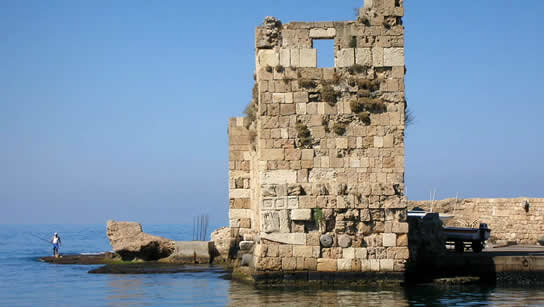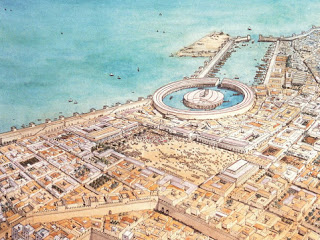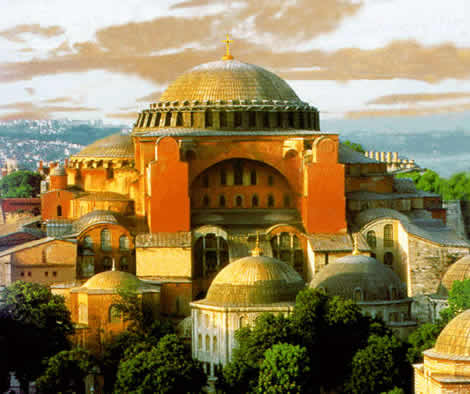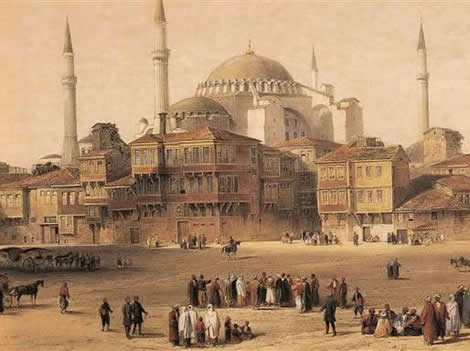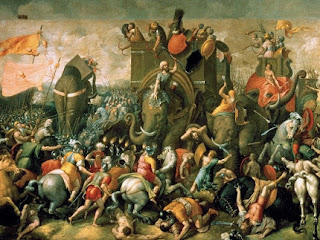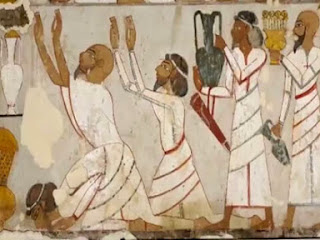Between the years 264 and 146 b.c.e., the Romans and Carthaginians fought three wars known as the Punic Wars that eventually led to the destruction of Carthage. The First Punic War lasted from 264 until 241 b.c.e. and resulted in Carthage losing control of Sicily to the Romans.
Hannibal Barca led the Carthaginian invasion of Italy during the Second Punic War, which ran from 219 to 202 b.c.e. At the Battle of Zama, in 202 b.c.e., Scipio (who gained the title Africanus because of his victory) defeated Hannibal.
The Carthaginians sued for peace, which lasted until the Third Punic War from 149 to 146 b.c.e. The third war ended with the complete destruction of the city of Carthage and the enslavement of the
population.
The First Punic War was fought for control of Sicily. At the start of the war the Carthaginians controlled most of Sicily. Carthage was interested in trade with other civilizations, and its power base was its fleet.
Rome, on the other hand, did not have a fleet but had a very powerful army. Because of the difference in power bases, the two powers had coexisted easily with each other up until the time of the First Punic War.
What brought about the war was a request by a group of men called the Mamertines, who had taken control of the town of Messana. They had been defeated by the Syracusans and then occupied by the Carthaginians, who did not want the Syracusans to occupy Messana.
The Mamertines then requested Roman aid to get rid of the Carthaginians. The Romans decided to come to the aid of the Mamertines and in 264 b.c.e. moved troops to Sicily, which were able to gain control of Messana when the Carthaginian garrison withdrew from the town.
The Romans negotiated with the Syracusans and other towns in Sicily and convinced them to join the Romans in the war. Because of their fleet, the Carthaginians were able to keep control of many of the coastal cities.
To finish the conquest of Sicily the Romans needed to build a fleet, and in 260 b.c.e. the Roman fleet took to the seas and began its campaign to drive the Carthaginians from the seas around Sicily. The Romans won several
naval battles during the period from 260 to 256 b.c.e.
The Romans had decided to try a different strategy to invade Africa in an attempt to defeat the Carthaginians on their home territory and end the war. The Romans sailed from Messana toward Africa but were intercepted by the Carthaginian fleet.
The Carthaginians were eventually overcome by Roman tactics and lost more than a third of their fleet, at which point they fled from the battle. The battle delayed the Roman invasion of Africa but only temporarily.
The invasion fleet reached Africa later that year and left the army to lay siege to Carthage. Calling for support to defend the city, Carthage received mercenaries from the Greeks, including a Spartan general who in 256 b.c.e. led the Carthaginian army in an attack on the Roman army. The Roman army was routed, and the siege, lifted.
The remains of the Roman army were evacuated later that year back to Rome. The focus of the war then returned to Sicily. From 254 until 243 b.c.e. the Romans and Carthaginians fought in Sicily with neither side being able to gain the upper hand in the fighting.
Then in 243 b.c.e. the Romans, with a new fleet, were able to again defeat the Carthaginians at sea and stop the flow of supplies to Sicily. With the loss of supplies and support the Carthaginian commander, Hamilcar Barca (Hannibal’s father), was forced to work out terms with the Romans.
Hannibal was born in 247 b.c.e. Hamilcar had been the commander of the Carthaginian troops in Sicily at the end of the war and spent the rest of his life trying to gain revenge on the Romans for the defeat.
In 237 b.c.e. at a religious festival, Hamilcar had his son Hannibal take an oath to remember that the Romans were their sworn enemies. That same year Hannibal accompanied his father to Spain, where he stayed until his return to Carthage in 228 b.c.e., after his father’s death, to finish his schooling.
 |
| Carthagian war elephants destroy roman army |
He returned to Spain in 224 b.c.e. to command the cavalry forces for his brother-in-law until his brother-in-law died in 220 b.c.e. The army then voted Hannibal its new leader. Hannibal would prove to be an excellent strategist and tactician.
Hannibal’s conquest of Spain eventually brought him into confl ict with the Romans when he captured the town of Saguntum. In 218 b.c.e. Hannibal and his army left Spain and headed for Italy, where he would campaign for the next 15 years.
Hannibal took his army, including war elephants, across the Alps and into Italy. His army was not large enough to capture and occupy the cities in Italy, so Hannibal tried to break up the Roman confederation, which would reduce Rome’s power and allow Carthage to win the
war.
In 218 b.c.e. Hannibal defeated a Roman army near the Trebia River where it flowed into the Po River. With this victory most of Cisalpine Gaul sided with Hannibal. The following spring he moved south, and Hannibal was able to lure the Roman army into a trap, where his army killed 15,000 of the 21,000 Roman soldiers.
Hannibal continued to pillage and burn the Italian countryside but could not take the city of Rome, nor would the Romans give up. A victory at Cannae was Hannibal’s high point. He continued to campaign in Italy over the next 11 years, but the Romans slowly gained the upper hand against the Carthaginians.
The Carthaginians tried to expand the war, and an army was sent to Sardinia but due to bad weather was delayed and arrived after the Romans, who defeated them. Hannibal was also able to convince Philip of Macedon to attack the Romans in Illyria. The Romans gathered a number of allies in Greece, which allowed them to hold
Philip in check.
During 216 to 205 b.c.e. Hannibal found himself more and more tied to protecting the cities of the Roman provinces that had sided with him. In 204 b.c.e. the Romans took the war to Africa by sending an army under the command of Scipio Africanus, attempting to end the war.
With the Roman invasion of Africa, Hannibal was recalled from Italy to command the army that was protecting Carthage. The years of war had finally worn down the Carthaginian army, and it was routed from the battlefield by the Romans.
Having lost the battle, the Carthaginians were in no shape to continue the war and made peace with the Romans. Hannibal helped to rebuild Carthage after the war, which irritated the Romans, who forced him into exile in 196 b.c.e. The Romans continued to pursue Hannibal, and in 183 b.c.e., he committed suicide.
The final war, the Third Punic War, was fought from 149 to 146 b.c.e. The Romans insisted that the Carthaginians abandon their city, which they refused to do. When the siege was completed and the city was captured in 146 b.c.e., 90 percent of the population was dead. The remainder were sold into slavery, and the city of Carthage was destroyed.



